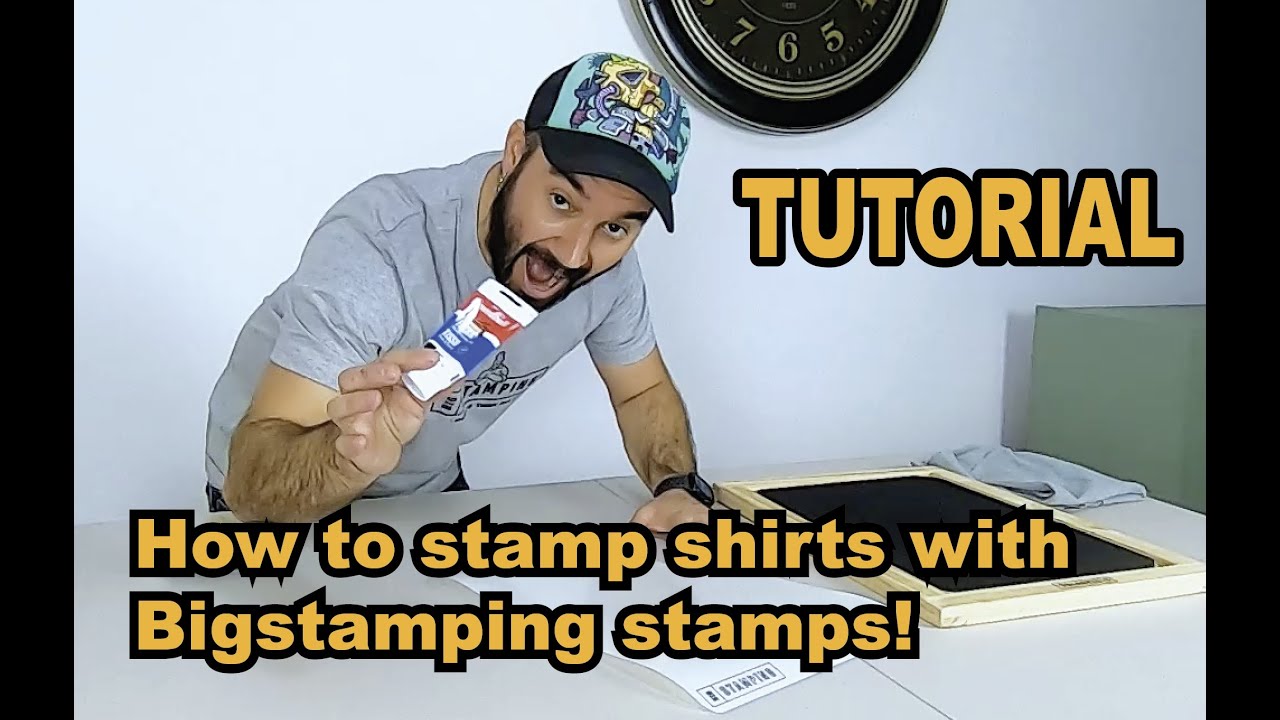Transform your clothing into a work of art with our innovative fabric stamp! Elevate your personal style and make a bold statement with this unique tool. Designed to unleash your creativity, our fabric stamp allows you to add stunning patterns and motifs to any piece of clothing effortlessly. Whether you’re a fashion enthusiast, DIY enthusiast, or simply looking to add a touch of individuality to your wardrobe, our fabric stamp is the perfect solution. With its easy-to-use design, you can customize your clothing in just a few simple steps. The versatile stamp offers endless possibilities, allowing you to experiment with different colors, shapes, and sizes. Express your personality and stand out from the crowd with personalized garments that reflect your unique taste. Our fabric stamp is durable and long-lasting, ensuring that your creations will withstand the test of time. From t-shirts and dresses to jeans and accessories, unleash your inner artist and transform your wardrobe into a canvas. Embrace your creative side and embark on a journey of self-expression with our exceptional fabric stamp.

The Art of Fabric Stamps for Clothing
Fabric stamps have been used for centuries as a versatile and creative way to add unique patterns and designs to clothing. From simple block prints to intricate motifs, fabric stamping allows individuals to express their personal style and elevate their garments to a whole new level of artistry. In this article, we will explore the world of fabric stamps and delve into its various techniques, benefits, and potential applications.
Understanding Fabric Stamps
Fabric stamps are tools that are used to transfer ink or paint onto fabric, leaving behind a desired pattern or design. These stamps can be made from a variety of materials such as rubber, wood, or even vegetables like potatoes. The patterns on fabric stamps can range from geometric shapes and floral motifs to abstract designs and intricate illustrations. The possibilities are endless, and fabric stamps provide a great opportunity for individuals to unleash their creativity.
The Benefits of Fabric Stamping
Uniqueness: One of the main advantages of fabric stamping is the ability to create one-of-a-kind designs. With fabric stamps, you can easily customize your clothing, ensuring that no one else will have the exact same pattern or design.
Cost-effective: Fabric stamps are a cost-effective way to add personality to your wardrobe. Instead of purchasing expensive designer clothing, you can transform plain and affordable garments into stylish pieces with the use of fabric stamps.
Easy to Use: Fabric stamps are incredibly easy to use, making them accessible to individuals of all skill levels. Whether you are a seasoned crafter or a beginner, fabric stamping provides a fun and rewarding creative outlet.
Versatility: Fabric stamps can be used on a wide range of fabrics, including cotton, linen, silk, and even denim. This versatility allows you to experiment with different materials and create unique designs on various types of clothing.
Sustainability: Fabric stamping promotes sustainability by encouraging the reuse and upcycling of clothing. Instead of discarding old garments, fabric stamps offer a sustainable solution to breathe new life into them and reduce waste.
Techniques for Fabric Stamping
Fabric stamping encompasses various techniques, each offering a distinct look and feel to your designs. Here are three popular techniques:
Block Printing: Block printing involves carving a design onto a block of material, such as wood or linoleum, and then using that block to stamp the fabric. This technique allows for precise and repetitive patterns, making it ideal for creating geometric shapes or intricate motifs.
Hand Carving: Hand carving fabric stamps offers endless creative possibilities. By carving your own designs onto materials like rubber or linoleum, you can create unique and personalized stamps that reflect your artistic style.
Stencil Printing: Stencil printing involves cutting out a design or pattern on a sheet of plastic or paper and then using it as a guide to apply paint or ink onto the fabric. This technique is particularly useful for creating larger designs or when working with intricate details.
Applications of Fabric Stamps
Fabric stamps can be used in a multitude of ways to enhance your clothing and accessories. Here are a few popular applications:
Customizing Clothing: Fabric stamps allow you to add your personal touch to clothing items such as t-shirts, dresses, and jeans. You can create patterns, monograms, or even stamp a whole design onto the fabric for a bold statement piece.
Home Décor: Fabric stamps can also be used to elevate your home décor. From stamping unique designs on throw pillows and curtains to creating custom table linens, fabric stamps offer a creative way to add personality to your living space.
DIY Gifts: Hand-stamped clothing and accessories make thoughtful and unique gifts. You can stamp personalized designs onto items like tote bags, aprons, or even create custom fabric for quilts or pillowcases.
Artistic Expression: Fabric stamps provide an outlet for artistic expression. Whether you are a professional artist or simply enjoy exploring your creative side, fabric stamping allows you to transform plain fabric into wearable art.
In Conclusion
Fabric stamps offer a world of creative possibilities for individuals looking to add unique patterns and designs to their clothing. From the versatility and cost-effectiveness to the easy-to-use techniques and sustainability factors, fabric stamping has something to offer everyone. So why settle for plain and generic clothing when you can unleash your creativity and turn your garments into wearable art?
Title: “Master the Art of Fabric Stamping: A Short Guide”
Bigstamping, the ultimate fabric stamping tutorial
Fabric Stamp for Clothing
Fabric Stamp for Clothing
| Stamp Type | Application Technique | Advantages | Disadvantages |
|---|---|---|---|
| Block Printing | By hand using carved blocks | – Offers intricate and detailed designs – Produces a unique, handcrafted look – Suitable for both small and large-scale production |
– Requires skilled artisans for precise printing – Can be time-consuming for complex designs |
| Screen Printing | Using a mesh screen and stencil | – Allows for quick and consistent printing – Perfect for large quantities – Ideal for multi-colored designs |
– Limited to simpler designs – Initial setup costs for screens and stencils |
| Digital Printing | Using a computer-controlled printer | – Provides limitless design possibilities – Allows for precise detailing – Suitable for small production runs |
– Requires specialized equipment and software – Higher cost per unit for small quantities |
| Heat Transfer | Using heat to transfer designs from a carrier sheet | – Offers vibrant and durable prints – Suitable for complex and photographic designs – Can be applied to a variety of fabric types |
– May result in a slightly plastic feel – Limited to flat surfaces |
As an expert in fabric stamping for clothing, it is essential to explore the various techniques available. The table above outlines different types of fabric stamps, their application techniques, as well as their advantages and disadvantages.
Block printing, characterized by its handcrafted nature, involves the use of carved blocks. This technique offers intricate and detailed designs, making it a popular choice for those seeking a unique aesthetic. However, block printing requires skilled artisans to ensure precise printing, and the process can be time-consuming, particularly for complex designs.
Screen printing, on the other hand, utilizes mesh screens and stencils to achieve quick and consistent prints. This method is perfect for large quantities and multi-colored designs. While screen printing may have initial setup costs for screens and stencils, it is a versatile technique suitable for simpler designs.
Digital printing, as the name suggests, involves the use of a computer-controlled printer. This technique provides limitless design possibilities and allows for precise detailing. It is particularly suitable for small production runs. However, digital printing requires specialized equipment and software, and the cost per unit can be higher for small quantities.
Lastly, heat transfer involves using heat to transfer designs from a carrier sheet onto fabric. This technique offers vibrant and durable prints, making it ideal for complex and photographic designs. Additionally, heat transfer can be applied to various fabric types. However, it may result in a slightly plastic feel and is limited to flat surfaces.
By understanding the different fabric stamping techniques outlined in the table, one can make informed decisions when it comes to choosing the most suitable method for their clothing production needs.

